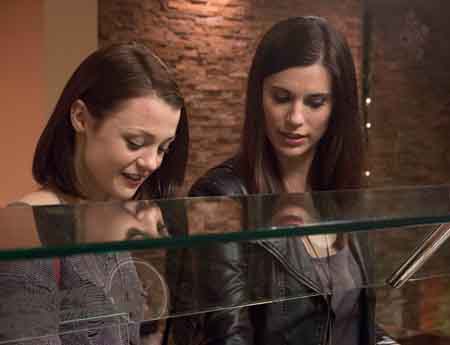Television Fare for Millennials: Shows To Entertain, Engage…and Transport

Related: They’re Not Afraid of the Dark
The world is changing fast. With the framework of society shifting swipe by swipe, ever-adaptive younger millennials and the leading edge of post-millennials are navigating a social media sharing culture, which has exponentially increased their exposure to new ideas, world events, injustices and justices. Even for these hyper-connected individuals, it’s overwhelming to process the constant influx of news, information and viewpoints that cycle through their daily feeds.
Last August marked an inflection point with many young people commenting on how their social media was inundated with stories of social chaos and change. As one 22-year-old explained, “[50%] of my feed is about the Ferguson shooting, 25% are friends ‘coming out’ about their mental health issues in light of Robin Williams’ death and 25% is the ALS challenge.” From serious race conversations to highly personal mental health revelations, and a revolutionary marketing campaign prompting an entire nation to dump ice water over people’s heads, their world seemed to have shifted on its axis from the week prior.
In fact, a new MTV study of 2,400 14-30-year-olds revealed that 70% agree, “the world is so chaotic it’s hard to know who or what to follow.” Even more poignant is that an overwhelming 8 in 10 (81%) agree, “it’s a challenge to know what’s real or fake in social media,” and almost 3 in 4 (74%) say, “there are just so many conflicting perspectives that it’s hard to know what to believe in today’s world.”
But while some might perceive it as a frustrating time in history to be trying to make sense of the world, young people are still finding ways to manage the onslaught of information, decipher real from fake and speak the truth.
They are busy playing the roles of detective and journalist simultaneously in a phenomenon we call REAL-searching. This generation, who has finely tuned “BS-ometers” does not take what they see in their feeds at face value. For them, everything has the potential to be a scam or staged. They cross-reference sources to evaluate whether “Alex from Target” was truly organic or a marketing ploy, and scrutinize elevator footage to determine if Jay-Z and Solange’s fight was real or fake.
The smarter way to stay on top of broadcasting and cable industry. Sign up below
So now the question is, how do content creators and programmers respond?
It’s no secret that the most popular TV programs in history have projected an alternate version of what is occurring in society at that moment in time. And that’s even truer today, especially for exhausted young people seeking respite from the constant churn of debate, opinions and information shared.
What we’ve found is that for this cohort and for the population at large, an escapism threshold has been crossed. In fact, the most popular programs today are pushing the boundaries of what’s considered real, fantasy and edgy in order to trump the chaos the audience is experiencing in everyday life. Young people need their entertainment to create distance and deliver overcomplicated worlds that can be safely deciphered.
At MTV, we’ve already delivered series that run parallel to this reality, but with completely unexpected twists. For example, in our hit show Finding Carter the lead character is forced to reconcile the paradox of a mother who kidnapped her, but went on to raise her in a very loving environment. Another example is our latest thriller, Eye Candy, that features a female lead who subverts the system using her hacking skills—inherently bad—to help find her kidnapped sister and assist families to find missing loved ones, a truly altruistic motive.
Given this audience is living in a world on warp speed, it’s no surprise that the shows driving the most connection to the youth audience today feature compelling characters and worlds that offer a safe distance to escape.
Jane Gould oversees and manages all research efforts for MTV, MTV2, mtvU and MTV’s digital and mobile properties, including all consumer studies, qualitative and quantitative analyses. She also identifies and forecasts trends that inform the brand’s development, programming and marketing on all screens including television, online and mobile.
